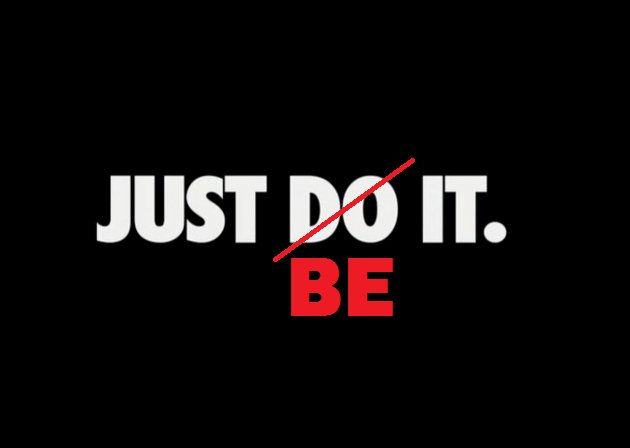
Being versus Doing
A few weeks ago we published an article describing the main rationale behind “Say what is,” the narrative of our blog. We’d like to expand on that idea by adding an additional layer of meaning.
To us, “Say what is” – in contrast to idioms like “tell it like it is” – conveys the importance of being. We have already pointed out the difference between being and doing in articles like “Balance between Discipline and Wasting Time” and “Do I fit in?”. This concept, like so many others, that help us better understand ourselves and live a happier life, is usually not taught in school, so you may not be familiar with it. Anita Moorjani hit the nail right on the head in her book “Dying to be me”:
“When we live completely from our mind over a period of time, we lose touch with the […] self, and then we begin to feel lost. This happens when we’re in *doing* mode all the time, rather than *being*. The latter means living from the soul and is a state of allowing. It means letting ourselves be who and what we are without judgment.”
When I learned about being for the first time, before I read “Dying to be me”, I was quite skeptical. Being suggests we might as well just sit on the couch all day long, enjoying ourselves and waiting for food, job opportunities, and friends to magically appear in front of us without having to lift a finger. This approach seems hardly useful. Surely, I thought, we should do something to master our life. As it turned out, I did not understand what being truly means until Anita Moorjani explained it to me:
“*Being* doesn’t mean that we don’t do anything. It’s just that our actions stem from following our emotions and feelings while staying present in the moment. *Doing* on the other hand, is future focussed, with the mind creating a series of tasks that take us from here to there in order to achieve a particular outcome, regardless of our current emotional state.”
When I read this for the first time I was so touched that I got tears in my eyes. I realised I had felt the difference between being and doing before. I remembered having felt at ease with myself when being and more stressed when doing, without being able to explain why. Reading this, I finally had the right vocabulary to express the difference.
Being requires full consciousness of the present moment. It doesn’t mean following our emotions blindly without reflection, nor being irrational. It also doesn’t mean we cannot plan ahead or think about the future.
As Eckhart Tolle writes in his book “The Power of Now”, we can use future-focussed doing as a tool to make plans or develop strategies to achieve a goal. Using doing as a tool means remaining present in the moment, in full consciousness, open to things we didn’t plan for without making our identity dependent on our plans and outcome. We remain in a state of being, a condition where, according to Tolle, we can “accept what is,” an idiom that mirrors our tagline “say what is”.
Living in the present, accepting and saying what is are all forms of being. This is why this theme is a major element of our blog’s narrative. Being makes us live our lives more at ease with ourselves and others, making it a constant area of development for us as individuals to live a more joyful life.

Written by Julia Heuritsch | Last edited: 16th June 2022